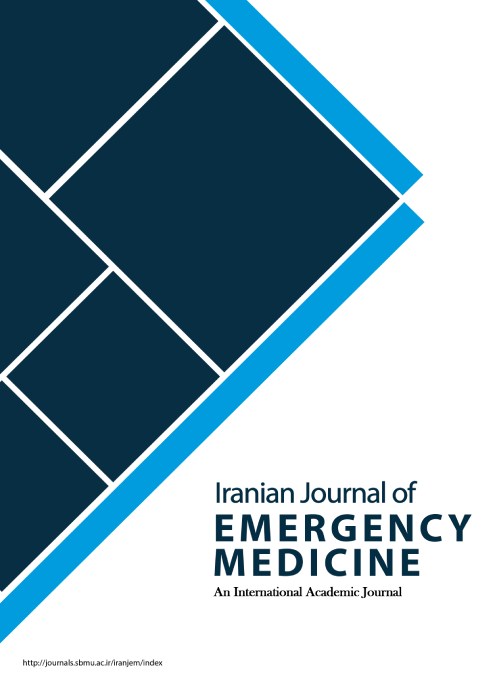Knowledge and Practice of medical Interns Regarding Use of Neck Collar in Trauma Patients; a Cross-Sectional Study
Author(s):
Article Type:
Research/Original Article (بدون رتبه معتبر)
Abstract:
Introduction
Having the skill for choosing the proper collar and correctly fastening it is very important for preventing neurovascular injuries in patients with head and neck trauma. Therefore, the present study was designed and carried out with the aim of evaluating the knowledge and practice of medical interns regarding use of neck collar for trauma patients.
Methods
In this cross-sectional study, the knowledge and practice of medical interns who were admitted to the medical internship program of Guilan University of Medical Sciences in 2009 was assessed in winter of 2017 using a questionnaire, the validity and reliability of which had been approved.
Results
80 medical interns with the mean age of 25.93 ± 1.02 years were studied (76.2% female). Mean knowledge score of the participants was 11.5 ± 2.7 (3 to 19). In addition, their mean practice score was 16.5 ± 2.3 (10 to 20). The highest rate of lack of knowledge was observed regarding factors predicting the rate of damage to neck and spinal cord (98.8%), the importance of injury (95.0%), the maximum time allowed for using neck collar (91.3%) and incorrect measures (91.3%). In addition, the highest rate of error in practice also belonged to leveling external auditory meatus with shoulder after fastening the neck collar in children (98.8%), putting a protective pad behind the rib cage after fastening the collar in children (95%) and employing at least 3 people when fastening the collar and maintaining the immobility of the vertebra before fastening the collar (65.0%), respectively. The score of practice and knowledge had a reversed correlation (p = 0.023, r = -0.225).
Conclusion
Based on the findings, the rate of knowledge regarding neck collar usage in more than 70% of the medical interns in the present study was in the intermediate to poor range. In addition, the practice of 60% of them was in the intermediate to poor range. There was no direct correlation between the knowledge and practice of the students in this regard.Keywords:
Language:
Persian
Published:
Iranian Journal of Emergency medicine, Volume:5 Issue: 1, 2018
Page:
11
magiran.com/p1792332
دانلود و مطالعه متن این مقاله با یکی از روشهای زیر امکان پذیر است:
اشتراک شخصی
با عضویت و پرداخت آنلاین حق اشتراک یکساله به مبلغ 1,390,000ريال میتوانید 70 عنوان مطلب دانلود کنید!
اشتراک سازمانی
به کتابخانه دانشگاه یا محل کار خود پیشنهاد کنید تا اشتراک سازمانی این پایگاه را برای دسترسی نامحدود همه کاربران به متن مطالب تهیه نمایند!
توجه!
- حق عضویت دریافتی صرف حمایت از نشریات عضو و نگهداری، تکمیل و توسعه مگیران میشود.
- پرداخت حق اشتراک و دانلود مقالات اجازه بازنشر آن در سایر رسانههای چاپی و دیجیتال را به کاربر نمیدهد.
In order to view content subscription is required
Personal subscription
Subscribe magiran.com for 70 € euros via PayPal and download 70 articles during a year.
Organization subscription
Please contact us to subscribe your university or library for unlimited access!


